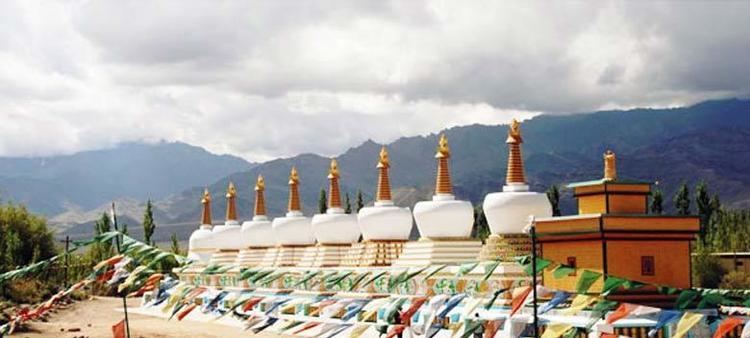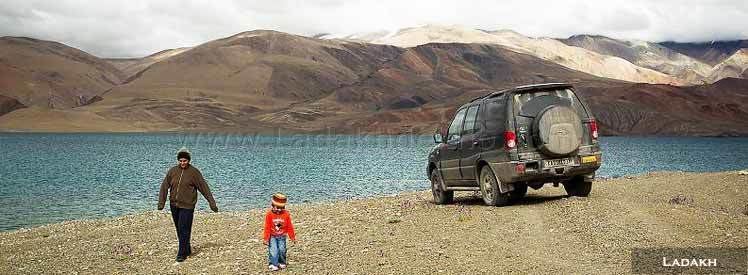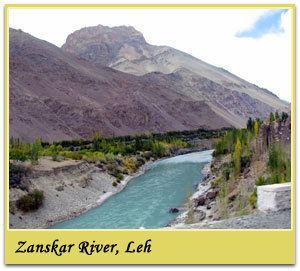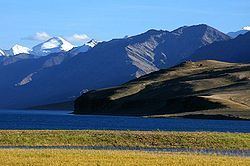 | ||
The aryans of india pregnancy tourism in ladakh unique stories from india
Ladakh (Tibetan alphabet: ལ་དྭགས་, [lad̪ɑks]; Hindi: लद्दाख़, pron. [ləd̪ˈd̪aːx]), a word which means "land of high passes", is a region in the state of Jammu and Kashmir of Northern India sandwiched between the Karakoram mountain range to the north and the Himalayas to the south. The Indian portion of Ladakh is composed of the Leh and Kargil districts. The Leh district is the second largest district of India, covering more than half the area of Jammu and Kashmir, of which it is the eastern part.
Contents
- The aryans of india pregnancy tourism in ladakh unique stories from india
- Transport
- Tourist places
- Popular locations
- Places to stay
- Permits and borders
- Ecotourism in Ladakh
- Trekking in Ladakh
- Popular treks
- Best Time to Trek
- Treks in Ladakh
- Easy Treks in Ladakh
- Moderate Treks in Ladakh
- Alpine or Tough Treks in Ladakh
- What to Do There
- Things To Know
- By Road
- By Air
- By Train
- Buddhist Tourism in Ladakh
- References
Transport

The only two roads into the area from outside are the Zoji-La Pass and Kargil route from Srinagar District in the Kashmir Valley, and the high altitude Manali-Leh Highway from Himachal Pradesh. The Manali-Leh road is open only from May or June to October or November, when snow is cleared from several passes. The Srinagar-Leh road is open from April or May to November or December, and is generally blocked by snow through the winter only at Zoji La Pass.

Kushok Bakula Rinpoche Airport at Leh has flights from Delhi year-round on Jet Airways, GoAir and Air India. Air India also operates weekly flights to Jammu and Srinagar. Cancellations and delays for two or three days are not uncommon and can happen at any time of year, so travellers must plan for that possibility when scheduling their onward travel.

Roads within Ladakh, except to Zangskar, are open all year round. Khardong-La Pass to Nubra has an alternate day schedule, is closed Mondays, and can get closed by snow for several days in winter and spring. Chang-La pass to Panggong Lake rarely closes, and if it does, rarely for more than one day.
Buses serve the whole area from Leh and Kargil towns. Taxis are available in Leh and Kargil as well as in block headquarters like Trangtse, Diskit and Khaltse. Shared taxis to Nubra, Kargil, Srinagar and Zangskar leave Leh in the early morning.
If planning one direction by air and the other by the Manali-Leh highway, the option closest to safety guidelines is to fly into Ladakh and go out by road to Manali. All Manali-Leh runs involve the risk of having to steep up to one thousand meters higher than Leh, with a high risk for severe altitude sickness. Travellers already acclimatised to the altitude of Ladakh, however, should suffer less and be able to enjoy the scenery.
Tourist places
Among the popular places of tourist interest include Leh, Drass valley, Razi khar (Chiktan Khar), Suru valley, Kargil, Zangskar, Zangla, Rangdum, Padum, Phukthal, Sani Monastery, Stongdey, Shayok Valley, Sankoo, Salt Valley. Popular treks are Manali to Ladakh, the Nubra valley, Pangong tso, Tso moriri, the Indus valley, Markha valley, Ladakh monastery trek, South Zangskar, Trans-Zangskar Expedition, Spiti to Ladakh, Spiti to Pitok to Hemis, Rupshu, the Great Salt lakes, Chadar Ice trek, Padum-Phuktal, Padam to Darcha, Panikhar to Heniskot, Padum to Manali, Lamayuru-Martselang, Lamayuru - Alchi, Kala Pattar trek, Pahal
Popular locations
The Razi Khar (Chiktan kahr/Chiktan Palace), which is situated 76 km from Kargil and 180 km from Leh is situated on the highway from Kargil to Leh, is the first Palace of the then ruler Thatha Khan. Its historic importance in the history of Ladakh and its ruler is very significant. It is said that the Leh Palace was built by the same architect after the completion of the Razi Khar, with his left hand because the king then cut his right hand so that he cannot build such a beautiful palace after it. Although it a little bit wrecked now, but the scenery from the top of the palace is impressive, especially on a full moon.
The Leh Palace, which is situated behind the main market has eight stories and is similar to the Potala Palace of Lhasa and still belongs to the royal family of Ladakh. Just ahead of the palace is the famous Chamba Temple, which is a one roomed shrine that has a large icon of Maitreya, the Buddha to come. Since this temple cannot be found easily, it is essential to enquire about it in the second row of shops.
Also in the bazaar, at the top of the street, one can see the Jama Masjid. This has been painted in green and white colour. Another place to visit is the Sankar Gompa, which is situated within the city and is one of the oldest structures here. At one time, this monastery only welcomes maximum twenty monks and is a fairly active one.
Places to stay
Ladakh has a large selection of mid-range accommodation, with some offering decent value. If you're coming from Manali you might find the selection somewhat limited, with attached bathrooms offering hot water somewhat hard to find. There are very few, if any, touts that are so common elsewhere in India, so looking around for accommodation here is much easier and less stressful.
The Thikse Monastery is a popular attraction. This monastery is the largest such structure in central Ladakh and is primarily known for its magnanimous statue of Maitreya (future Buddha) in its Maitreya Temple. This statue is 15 m (49 ft) high and the largest such statue in Ladakh. The Buddha is unusually portrayed as seated in the lotus position rather than his usual representations as standing or in a sitting posture on a high throne.
Permits and borders
No special permit is required to visit most of Ladakh, including Leh and Kargil towns. Permits are required for foreign tourists to visit the "Inner Line" areas, i.e. Nubra Valley; Panggong Lake and the Durbuk Block that it lies in (i.e. north of the Changla Pass); Tso-Moriri and Tsokar Lakes and the area along the Indus River east of Upshi; and Dha-hanu and the area along the Indus River northwest of Khalatse. These permits are easily available in Leh town and do not need to be acquired while applying for an Indian visa. Foreigners must get their permits through a travel agents.
Permits are not available for foreigners to go to the far reaches of each of the above-named areas close to the borders (or Line of Control, etc.) with Pakistan and China. For example, foreigners can go to the edge of Panggong Lake and Maan and Merak villages, but not along the edge of it to Phobrang or Chushul villages; they cannot proceed east up the Indus from the Mahe Bridge; and in Nubra, they can only go as far as Panamik to the north and Turtuk to the west.
There are no border crossings open between Ladakh and neighbouring regions of Baltistan (under Pakistan) or Tibet (under China).
As per recent govt guidelines Indian tourist are not needed to make permit before visiting "Inner Line" area. As per notification any valid ID proof issued by Govt of India like Passport, Driving license, Pan card, Aadhar card etc. will serve the purpose. Foreign nationals however, are still required to get the permits.
Ecotourism in Ladakh
Due to the strain that tourism can cause on local resources, the concept of "Ecotourism" has been introduced in Ladakh by non-governmental organizations like the Snow Leopard Conservancy India Trust's Himalayan Homestays Program and Women´s Alliance of Ladakh (WAL), travel agencies like Zanskar Trek, the first village based travel company Hidden North Adventures, and individuals like Helena Norberg-Hodge and Thinlas Chorol.
People are being asked to reduce waste and water consumption and to use more environmental options when possible. One of these being the "Homestays", a system where tourist who are trekking in Ladakh, instead of bringing tents and supplies that often has to be carried by horses or donkeys, they stay with local families in the villages they pass. This is seen both as environmental since the pack animals can sometimes eat all the limited vegetation, and as socially responsible since it puts money directly into the local villages.
In May 2001 The Mountain Institute, Ladakh Ecological Development Group and Snow Leopard Conservancy organizes a workshop on "Ecotourism Opportunities in Rural Ladakh" in the city of Leh in order to "increase awareness" and "explore opportunities for ecotourism".
Trekking in Ladakh
Ladakh is one of the most favourite trekking destination, having some of the most picturesque and challenging treks. Ladakh is a paradise for adventure lovers given by its world’s mightiest mountain ranges, the Greater Himalaya and the Karakoram, and two others, the Ladakh range and the Zangskar range. The most important feature of trekking in Ladakh is its High Mountain passes which comes on the trekking routes gives opportunity to have wonderful view of colorful mountains and amazing landscape.
Popular treks
The treks from Spituk to the Markha valley and Lamayuru gompa to Chiling village alongside the Zanskar River are the most popular treks in the region. Another trek route is from Likir to Temisgam.
Best Time to Trek
Treks are open from the June end up to mid October. The passes for trekking are as high as 5,000 m in altitude. Many trekking agencies in Leh offer trek packages with a guide, packhorses, food and supplies.
Treks in Ladakh
Trekking in Ladakh India. The attraction here for the tourists are snow clad peaks, translucent lakes, barren terrain etc. The best season to go on trekking tours and expeditions in Leh Ladakh in this region is between June and September. Hiking in Ladakh India is one of the famous adventure sports awaiting the trekking enthusiast in Leh Ladakh Himalaya India. One who are fascinated by the unexplored. The mountain ranges of himalaya Ladakh offer breathtaking, enthralling trekking routes. In the vast amphitheatre of the Indian Himalayas and Karakorams, there are limitless possibilities for trekking tours, mountaineering and river rafting tours.
Easy Treks in Ladakh
Sham Trek (07 Days), Spituk Trekking (06 Days), Indus Valley Trek (13 Days), Sham & Indus Valley Trek (14 Days)
Moderate Treks in Ladakh
Manali Ladakh Trekking (23 Days), Markha Valley Trek (11 Days), Spiti To Ladakh (24 Days ), Sangla to Leh Trek (13 Days), The Nubra Valley Trek (10 Days ), Tsomoiri Lake Trek (23 Days), Trekking in Zanskar (darcha-Padum) (18 Days), Lamayuru Alchi Trek (09 Days), Lamayuru Martselang Trekking (19 Days), Lamayuru Chilling via Dung-Dung La (12 Days), Ladakh Monastery Trek (17 Days), Wild Ladakh Trekking (23 Days)
Alpine or Tough Treks in Ladakh
Hemis Rupsu Darcha Trekking (21 Days), Stok Kangri Trekking (18 Days), Remote Zanskar Trekking (18 Days), Darcha Lamayuru Trek (18 Days), Frozen River Trek (23 Days), Journey To Southern Zanskar (26 Days), Ladakh, Zanskar Trek (18 Days), Lamayuru Padum Trek (19 Days), Stok Kangri Climb-Markha Trekking (22 Days), Trans, Zanskar Expeditionl (27 Days), The Rupshu Trek (23 Days).
What to Do There
On Old Leh Road exists the Tibetan Refugee Market which is an ideal place for shopping in Leh. Tibetan markets are popular for their metal-ware. The visitors here who have an eye for artistic pieces would find sonorous bowls made of nine metals like cymbals, decorative brass and copper trumpets. Besides, cymbals that have religious themes that are used in meditation are also found here.
It is possible to find relevant items like unpolished silver and turquoise jewellery and chunky shell bangles worn by Ladakhi women there. There are ranges of excellent rugs and carpets that have traditional Persian and Kashmiri themes. Some other attractions of these markets are the native Thangka paintings, jewellery made of semi-precious stones, small prayer wheels, shawls, stoles and music bowls. One can also find the lapis lazuli from Afghanistan and the rubies from Burma.
Things To Know
One way to travel within the region is by the state buses, which ply on fixed routes according to fixed time schedules. Most comfortable and convenient though expensive mode of travel, however, is taxi, which is available for hire on fixed point-to-point tariff basis. For visits to the newly opened areas of Nubra, Dah-Hanu, Tsomoriri, Tsokar and Pangong Lake, it is mandatory to engage the services of a registered and recognised travel agency that makes the requisite arrangements including internal transport.
By Road
Leh is connected by good motorable roads to all major places in India. Leh is: 1047 km from Delhi, 434 km from Srinagar, 230 km from Kargil, 494 km from Manali, 380 km from Keylong, 118 km from Deskit (Nubra Valley), 690 km from Jammu.
The overland approach to Ladakh from Kashmir Valley via Kargil is approximately 434 km, which remains open for traffic from early June to November. The dramatic part of this road journey is the ascent up the 11,500 feet 3,505 m high Zoji-La, the pass in the Great Himalayan Wall that serves as the gateway to Ladakh. There is also a motorable route between Manali and Leh which is 473 km long. Manali-Leh Road has been serving as the second overland approach to Ladakh. Open for traffic from around mid-June to early October, this high road traverses the upland desert plateau of Rupsho, where altitude ranges from 3,660m to 4,570m. A number of high passes fall en route among which the highest one known as Taklang-La is the world's second highest motorable pass at an altitude of 17,469 feet/5,235 m. Both the Himachal Pradesh Tourism (HRTC) and J&K State Tourism (SRTC) operate daily deluxe and ordinary bus services between Manali-Leh and Srinagar-Leh. The bus journey between Leh and Manali takes about 19 hours or two days with an overnight halt in camps at Serchu or Pang. And the Srinagar-Leh trip takes 17 hours.
By Air
Ladakh is well connected by air with New Delhi, Jammu and Srinagar.
By Train
The nearest railhead is Udhampur connected with all major cities and towns in India.
Buddhist Tourism in Ladakh
Buoyed by heavy tourist arrival in Ladakh, the Jammu and Kashmir Government has embarked on an ambitious plan to put this Himalayan district on the Buddhist circuit to woo pilgrims. With tourism being a major sector contributing towards the development of the state's economy, the state government under the leadership of Chief Minister Omar Abdullah is planning to restore the existing monasteries in the region, hire landscaping experts, set up tourism centers as well as provide basic road infrastructure in the region. Keeping in view the increasing flow of tourists into Ladakh every year, the government plans to have facilities like the tourist centers not only in the main city but also in places which hold tourist interests like the monasteries in Ladakh, areas around the banks of Indus river and many more. Last year around 1,48,588 tourists visited the region of which 29,856 were foreigners. Keeping these figures in mind the government is also keen not to spoil the natural beauty of the region which includes the famous fresh water Pangong lake and highest motorable road to Khardungla. There are about 35 Buddhist monasteries spread across the region which thrives on donations made by tourists and the local people of the region but now the government plans to develop these monasteries. The Jammu and Kashmir government is hoping that the financial aid to develop Ladakh into a bigger tourist attraction over the coming years and hopes to allocate the necessary funds in this financial year. The state government also plans to hire experts for landscaping of the barren regions and such a move was possible only after the Centre released funds.
